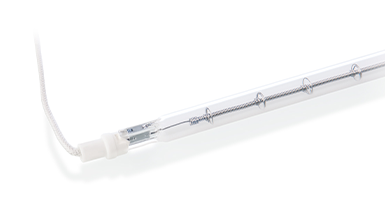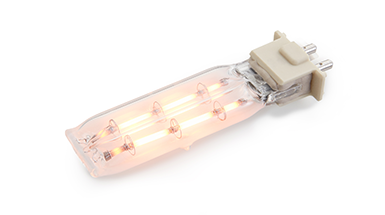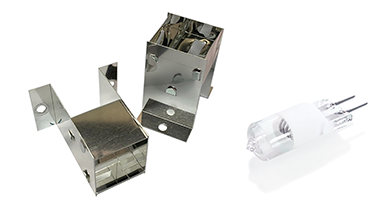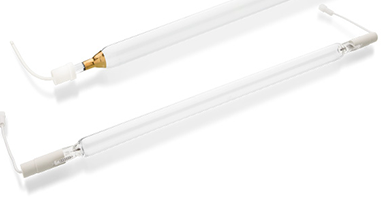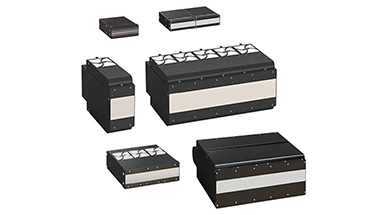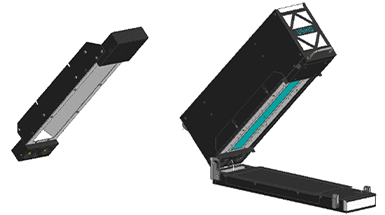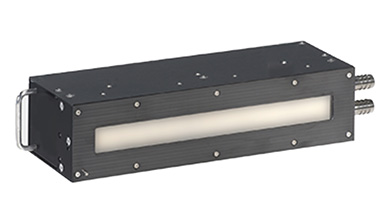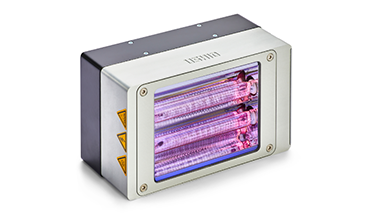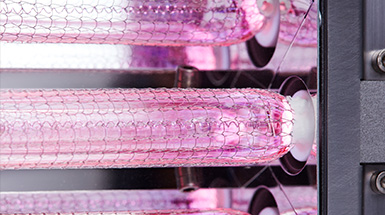Printing
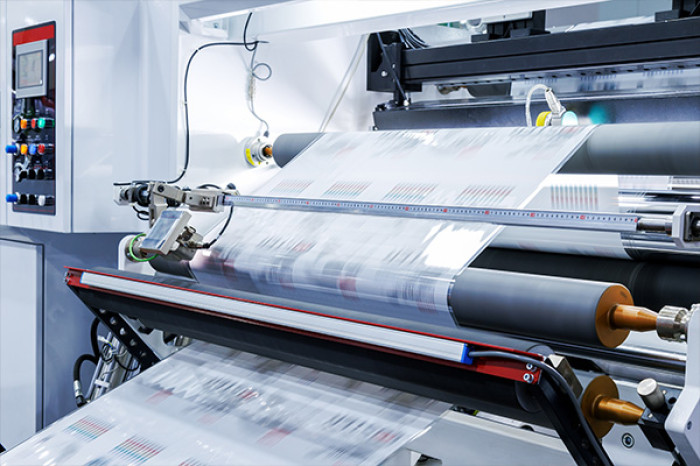
The industrial printing market is a dynamic and diverse industry, covering a wide range of applications such as packaging, finishing of textiles and decors, printing of novel solar cells, flexible electronics and functional surfaces. Fueled by technological advancements, it continuously evolves, with growing demand for high-quality, customized, and sustainable solutions.
The integration of various radiation based technologies into the printing process like IR drying, UV and UV LED curing as well as UV surface pre-treatment drives innovation, enabling faster production, improved product performance, and vibrant designs across various substrates.
Infrared (IR) and ultraviolet (UV) technologies are both widely used in the printing industry but serve distinct purposes based on their mechanisms and applications.
IR Drying: Efficient heat absorbation
Infrared (IR) drying uses heat emitted as infrared radiation to evaporate water or solvents in inks and coatings. This makes it ideal for applications involving water-based materials, such as printing on paper, cardboard, and textiles. IR drying ensures consistent results and faster drying times than traditional air drying, optimizing productivity. As it relies on heat absorption, it is widely used for non heat-sensitive substrates. IR systems are energy-efficient when applied precisely, offering a reliable and cost-effective solution for applications that require thermal drying.
UV Curing: Speed and Durability
Ultraviolet (UV) curing employs UV light to trigger a photochemical reaction in inks, coatings, or adhesives containing photoinitiators, resulting in instant hardening without the need for evaporation. This technology is perfect for applications requiring high-performance finishes, such as abrasion and solvent resistance, or when working with heat-sensitive materials like plastics. UV curing is extremely fast, enabling rapid production cycles and enhanced durability. UV LED systems further improve efficiency with minimal heat generation and lower energy consumption, making them ideal for sustainable, high-quality printing operations.
VUV Excimer Surface Treatment: Improved adhesion and durability
Ensuring robust, vibrant and long-lasting prints is a challenge for certain material and ink combinations due to a lack of adhesion or cleanliness. Vacuum UV Excimer radiation represents an effective method to optimize the substrate properties before printing by activating the surface and removing contaminations from it. This treatment creates a clean, high-energy surface with improved adhesion properties. The outcome is a significant enhancement in material printability, ensuring superior and consistent printing quality. Besides surface preparation before the printing process, VUV radiation has also seen a surge in usage in post printing applications like VUV matting, which allows to create low gloss, robust surfaces and direct curing applications of photoinitiator free inks and varnishes.
